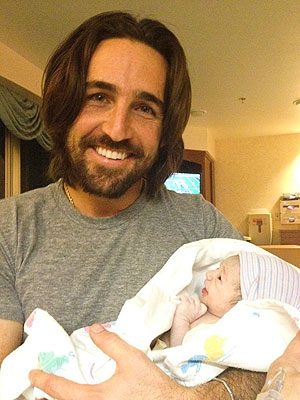Tyler Hicks/The New York Times
After the Cease-Fire:
Palestinians and Israelis returned to a semblance of normal life after eight days of lethal conflict between Israel and Hamas.
GAZA — Palestinians erupted in triumphant celebrations here on Thursday, vowing new unity among rival factions and a renewed commitment to the tactic of resistance, while Israel’s leaders sought to soberly sell the achievements of their latest military operation to a domestic audience long skeptical of cease-fire deals like the one announced the night before.
After eight days of intense Israeli shelling from air and sea that killed 162 Gazans, including at least 30 militant commanders, and flattened many government buildings and private homes, people poured onto the bomb-blasted streets, beaming as they shopped and strolled under the shield of the cease-fire agreement reached Wednesday in Cairo. The place was awash in flags, not only the signature green of the ruling Hamas party but also the yellow, black and red of rivals Fatah, Islamic Jihad and the Popular Front for the Liberation of Palestine, a rainbow not visible here in years.
Despite the death and destruction, Hamas emerged emboldened, analysts said, not only because its rockets had landed near Tel Aviv and Jerusalem, but also from the visits and support by Arab and Muslim leaders, potentially resetting the balance of power and tone in Palestinian politics, as leaders from various factions declared the peace process dead.
“The blood of Jabari united the people of the nation on the choice of jihad and resistance,” Ismail Haniya, the Hamas prime minister, declared in a televised speech, referring to the commander Ahmed al-Jabari, killed in an Israeli airstrike at the beginning of the operation last week. “Resistance is the shortest way to liberate Palestine.”
There were neither celebrations nor significant protests across the border in Israel, where people in southern cities passed the first day in more than a week without constant sirens signaling incoming rockets sending them to safe rooms. Instead, an uneasy, even grim calm set in. The military announced that an officer, Lt. Boris Yarmulnik, 28, had died from wounds sustained in a rocket attack the day before, bringing the death toll on the Israeli side to six, four of them civilians. The Israeli authorities announced several arrests, including of an Arab Israeli citizen, in a bus bombing in Tel Aviv on Wednesday that revived memories of the violence from the last Palestinian uprising.
But there was collective relief in Israel as thousands of army reservists, sent to the Gaza border ahead of a possible ground invasion, gradually began returning home. With national elections eight weeks away, Israeli politicians tried to showcase accomplishments without raising expectations.
“It could last nine months or it could last nine weeks,” Defense Minister Ehud Barak said of the cease-fire. “When it does not last, we will know what to do. We see clearheadedly the possibility that we will have to do this again.”
And so it went on the day after the latest round in the decades-old Israeli-Palestinian conflict. What was widely heralded as a game changer by Palestinian politicians and independent analysts alike was viewed by Israeli officials and commentators as a maintenance mission that had succeeded in its stated goals: restoring quiet after months of intensifying rocket fire, and culling the weapons cache of Gaza’s armed groups.
Details of the cease-fire agreement announced Wednesday by Secretary of State Hillary Rodham Clinton and the Egyptian foreign minister remained unclear. Both sides pledged to stop the violence, and Palestinians say Israel will loosen its restrictions on fishing off Gaza’s Mediterranean coastline and farming along its northern and eastern borders. But the critical question of whether the border crossings would be open wide for people and commerce was not fully addressed, with only a vague promise that discussions would ensue after 24 hours. The exact agenda, time, location and even participants in these discussions have not been announced.
At the same time, Mustafa Barghouti, a West Bank leader who has spent the past several days in Gaza, said the Palestinian factions had agreed to meet in Cairo for another round of unity talks in the next few days, as President Mahmoud Abbas of the Palestinian Authority prepares to take his case for observer-state status to the United Nations next week. Though Hamas and Fatah, the party Mr. Abbas leads, have signed four reconciliation agreements in the five years since Hamas took control of Gaza after winning elections here, Mr. Barghouti said this time was different.
“Hamas is stronger, of course, and Abbas is having to change his line because negotiations failed,” he said after appearing with Mr. Haniya at a rally. “This time Israel felt the heat of the Arab Spring, and Gaza was not isolated; the whole Arab world was here. The road is open for unity.”
First, though, Hamas faces an enormous rebuilding effort, with at least 10 of its government buildings — including the ministries of culture, education and interior; the prime minister’s headquarters; and police stations — now reduced to rubble littered with payroll sheets and property tax rolls. A spokesman said that the government kept most records on laptops, but the Abu Khadra, a huge complex of constituent services, is gone.
Dr. Hassan Khalaf, director of Al Shifa Hospital, which was not attacked, dismissed the worry. “We can gather under the sky under a tent,” he said. “They can come to my house.”
In Jerusalem, Dan Meridor, a senior minister of intelligence and atomic energy, told reporters that Israel had “used force in a very moderate and measured way.” He said the military had struck 10 times the number of targets compared with the previous government’s invasion of Gaza four years ago but killed far fewer people than during that invasion: slightly over 10 percent. One of the main military achievements, he said, was the destruction of most of the long-range Iranian Fajr-5 missiles in Gaza.












